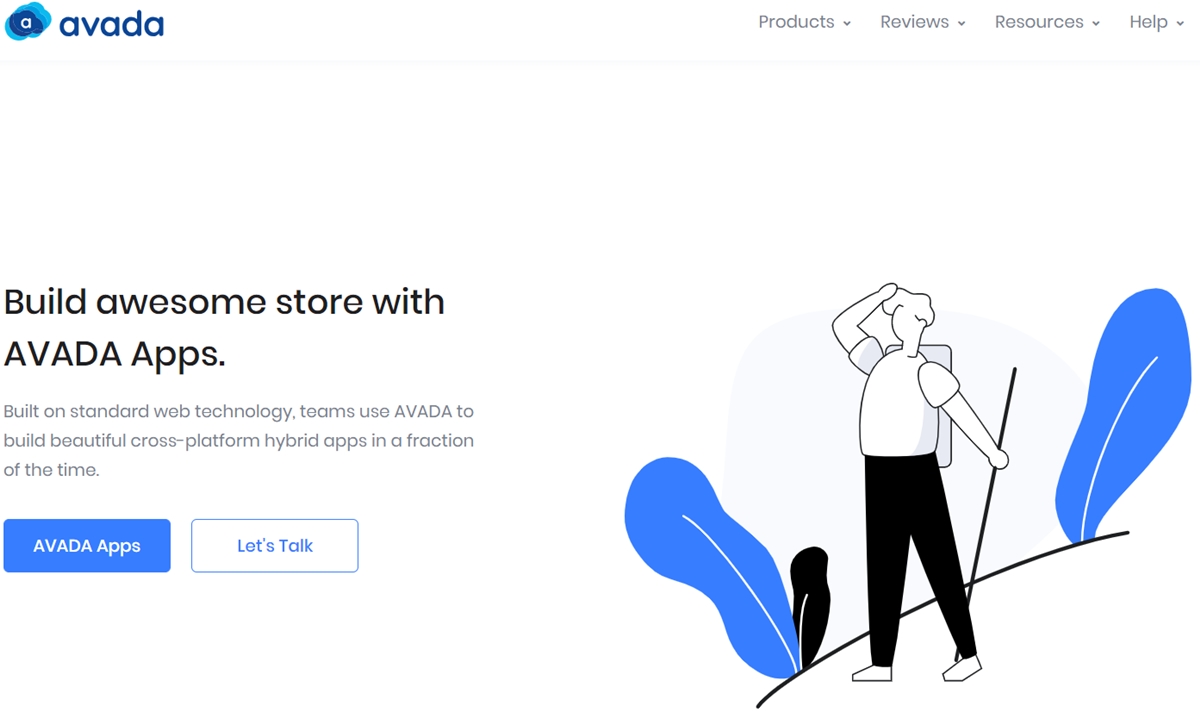How to Become a Successful Online Retailer
Have you ever considered starting your own online store?
Do you have grandiose dreams of working from home on your laptop while your e-commerce business soars in sales?
This guide will show you 10 fundamental steps to becoming a successful online retailer, whether this is your first time building a small business or you've been in the game for a while.
Let's get right to it!
The following are ten steps to becoming an online retailer:
Step 1. Building a business plan
Would you open and operate a physical store without a business plan? If not, you should not try to open an online retail store without one.
All businesses require a business plan. You don't start a dropshipping business without a solid and practical plan, just like you wouldn't build a house without blueprints or make a movie without a script.

A business plan for an online store should clearly define how it will be used. Will it be used for internal audiences (business owners, employees, etc.) to efficiently review and manage the business? Or will it be used to reach out to external audiences (investors, banks, alliances, customers, and so on)?
Furthermore, it should include the approach that will be used for business management, financing, and marketing. In any case, whether you're reviewing business or looking for funding, your audience should understand exactly what your online business will do, how you'll manage your cash flow, and what your marketing and sales strategies will be.
So, there is a handful of things to keep in mind to help you write an effective business plan:
- Define your customers: You can save a lot of money on advertising if you can narrow down the groups of customers who are likely to buy your products or services. Furthermore, business strategies and the level of detail can be tailored to fit them.
- Have a clear goal: If you intend to self-fund, it is a good idea to specify how you will do so. If, on the other hand, you want to attract investors, your business goal should appeal to them from the start.
- Invest time in research: Understanding who you're selling to, the supply and demand sources for your products, and who else in the market is selling the same products or services will help you a lot.
- Keep the plan brief and to the point: Regardless of who you're writing for, your business plan should be brief, easy to read, and concise.
- Remember that while many businesses can succeed without planning, businesses that plan grow 30% faster than those that do not.
Step 2. Choosing products to sell
While your business plan most likely outlines the general types of products you intend to sell, this step requires a much more detailed and extensive list of your offerings.
Basically, your products can be anything that falls into various categories. Depending on your budget and resources, you could focus on a single product line or expand into multiple lines.
However, when selecting products to sell, the first thing to consider is what problems your products can solve. You should think about some questions for yourself. Why should customers spend their money on your product? What can actually help them and solve their problems? What can you do to help those who are in need?
Answering those questions and putting yourself in the shoes of your customers will give you an idea of what you should sell and how you can sell them.
You can learn how to find exactly what products you need to sell by reading this 5-Phase Process to Find Products to Sell.
Step 3. Knowing your competitors
The first and most important rule of running any business is to never claim that you have no competitors. Even if you believe your products are completely unique and doing well, someone else will be doing something similar to you.
So simply being aware of your competitors is insufficient; you must also get to know them. You should be familiar with their market share, product and service offerings, pricing strategy, and customer acquisition strategy.

If you are about to launch an online sneaker store, you are not simply competing with other retailers. You're also up against other large shoe brands and businesses that make footwear. You can see the full scope of your competition by looking at your sneakers and evaluating their value proposition (foot protection, durability, athletic use, and design).
You can conduct market research on your competitors or search social media channels for the most recent changes. Then, if necessary, you can modify your business strategies.
Also, keep an eye on your competitors on a regular basis. Markets change by the minute, and so do your competitors. New businesses will enter the fray, while existing businesses will adapt to changing demands.
As a result, it is critical to approach competitor analysis as an ongoing task that must be reviewed on a regular basis in order to stay ahead of the competition.
Step 4. Choosing between dropshipping or holding your own inventory
What is the next step in starting an online retail business? Choosing whether to dropship or keep your own inventory!
This guide will spend enough time explaining dropshipping to those who are still confused. Dropshipping is a business model in which no inventory is held. When a customer places an order, the retailer sends the order and shipping information to a third party, such as a wholesaler, manufacturer, or another retailer, who then ships the product to the customer.
This type of business has done well in recent years because it does not require a physical location and only requires a laptop connected to the Internet.
Another option is to carry inventory. In this case, when a company receives an order, it exports the required item(s) from its shelves and ships them directly to the customer. As a result, there is no third party involved because the customer receives their order directly from the online business from which they ordered.
In this section, I'll go over the benefits and drawbacks of both options so you can make an informed decision.
Step 5. Registering your domain name
A domain is your address if your website is a house. The address consists of a series of numbers such as 12.345.6789, which is known as an Internet Protocol address (IP address).
IP addresses are used by computers to communicate; however, they are difficult for people to remember and access. As a result, a domain with a string of letters is used for convenience.
A domain name, like a fingerprint, is unique to your website and cannot be shared with other websites. This is your website's homepage's URL (Unique Resource Locator).
For example, let’s have a quick look at our website’s address: avada.io

As a result, selecting the right domain name for your website is critical because a combination of simple spelling, SEO, and brand identity will increase your chances of being found in search engine results.
Remember some tips while you choose your domain name:
- Keep it short, simple, and memorable
- Avoid numbers (e.g. fashionablesneakers123.com)
- Avoid making it a full sentence (e.g. buyfashionsneakersinFlorida.com)
- Avoid misspelled domain name
- Avoid hyphenated domain
In addition, a web hosting account is required to store your website's files. To put it simply, if the domain name is the address, then web hosting is the actual house to which the address points.
When someone types your domain name into a browser, it is converted to the IP address of the web hosting company's computer. This computer contains all of your website's files, which it sends back to the users' browsers.
Thus, it’s also crucial to make a note before selecting reliable web hosting:
- The price of web hosting
- Hosting security
- Hosting reputation
- Upgrade option
- Customer service
Step 6: Learning online business laws
In fact, online business laws are quite similar to brick-and-mortar business regulations, but with their own unique features and characteristics that must be considered.
The following are three stringent regulations with which your online retail business must comply:
- Privacy and security concerns
Online buyers are very concerned about their privacy and security. They will leave if they suspect your online business is not completely secure.
That is why e-commerce companies must be accountable for keeping consumer information secure and out of the hands of cybercriminals. The government places a premium on information security because it not only benefits businesses but also helps them avoid legal issues.

So, as an online retailer, you need to take the following pieces of customer information into account:
Credit card numbers
Personal contact information
Social security numbers
Account numbers
Copyrights, patents, and trademarks
Many people misinterpret the meaning of these words; however, when establishing an online business, you must clearly distinguish to avoid any unwanted legal complications.
Copyright: the legal protection of authorship works such as photographs, songs, and videos.
Patents are used to protect inventions that must be novel and functional.
Trademarks: protect brands, logos, and company names that distinguish one party's goods from those of others.
You may or may not want to apply for one of these depending on the products you intend to sell. However, you should exercise caution to ensure that your products and businesses do not infringe on other people's copyrights, patents, or trademarks.
For example, if you sell T-shirts with Avengers characters on them, you may encounter legal issues.
- Online sales tax
Most people are aware of sales tax, which is an additional percentage that stores collect from customers. However, if you sell your products online, things may be a little different.
If you run an online business in the United States, the basic rule for collecting sales tax from online sales is as follows:
If your company has a physical presence in a state (office, warehouse, inventory), you must collect online sales taxes from customers in that state.
If not, you are not required to collect sales tax on online purchases.
But keep in mind that not every state has a sales tax, and regulations change on a daily basis, so stay up to date on the latest laws!
Step 7. Creating your website
There are numerous platforms to choose from when launching an e-commerce store. You can use Shopify, BigCommerce, or Wix, for example.
The amazing thing about these websites is that you can buy your own domain name and they provide you with the tools and instructions you need to build your website from the ground up.
You must also select an overall design for your website. This includes things like the theme, headers, product categories, and more. To attract customers to your site, include other sections such as About Us, Contact Us, or a company blog.
Step 8. Launching, advertising, and marketing
It's finally time to get to the most exciting part: selling. However, once your products and store are live, you cannot simply sit back and wait for customers to come to you. You must do something to entice them. Furthermore, advertising and marketing are critical to increasing traffic and generating sales.
Online marketing methods that are commonly used include:
Search Engine Optimization (SEO): SEO is a long-term marketing strategy for driving organic traffic to your online business site. Search engines, such as Google, rank websites based on the average amount of time users spend on them. That's where content marketing and SEO come in: super high-quality content helps you rank, keep audiences engaged for longer periods of time, and drive traffic to your store, ultimately increasing sales.
Social media marketing: Many people use social media channels every day, and your business should as well. Facebook, Instagram, and Twitter are fantastic tools for showing your presence, building closer relationships with your audience, and connecting with them easily.

·
Email marketing: This strategy has been regarded as one of the
most effective methods of approaching prospects and re-engaging with existing
customers. Email is used by 94% of Internet users, demonstrating the power of
email marketing.
· Influencer marketing: Influencers are
well-known and well-liked people on social media platforms, with a large number
of followers and credibility among their followers. E-commerce merchants
frequently pay an influencer a fee to promote their products on the
influencer's channel. And it works really well!
Step 9. Learning from experts and successful online businesses
If you want to expand your online retail business, one effective way is to learn from experts and other successful online businesses.
By learning valuable experiences from first movers, you can:
- Know the way they plan and operate their business
- Dig deep their marketing strategies and management styles
- Follow them and update the latest trends
- Learn how they treat their customers
- Avoid ‘stupid’ mistakes when running an online business
Direction and guidance are extremely important. In a nutshell, there is a distinction between operational and successful. So, manage your time wisely and learn from those who have already made it and are still doing well!

Comments
Post a Comment